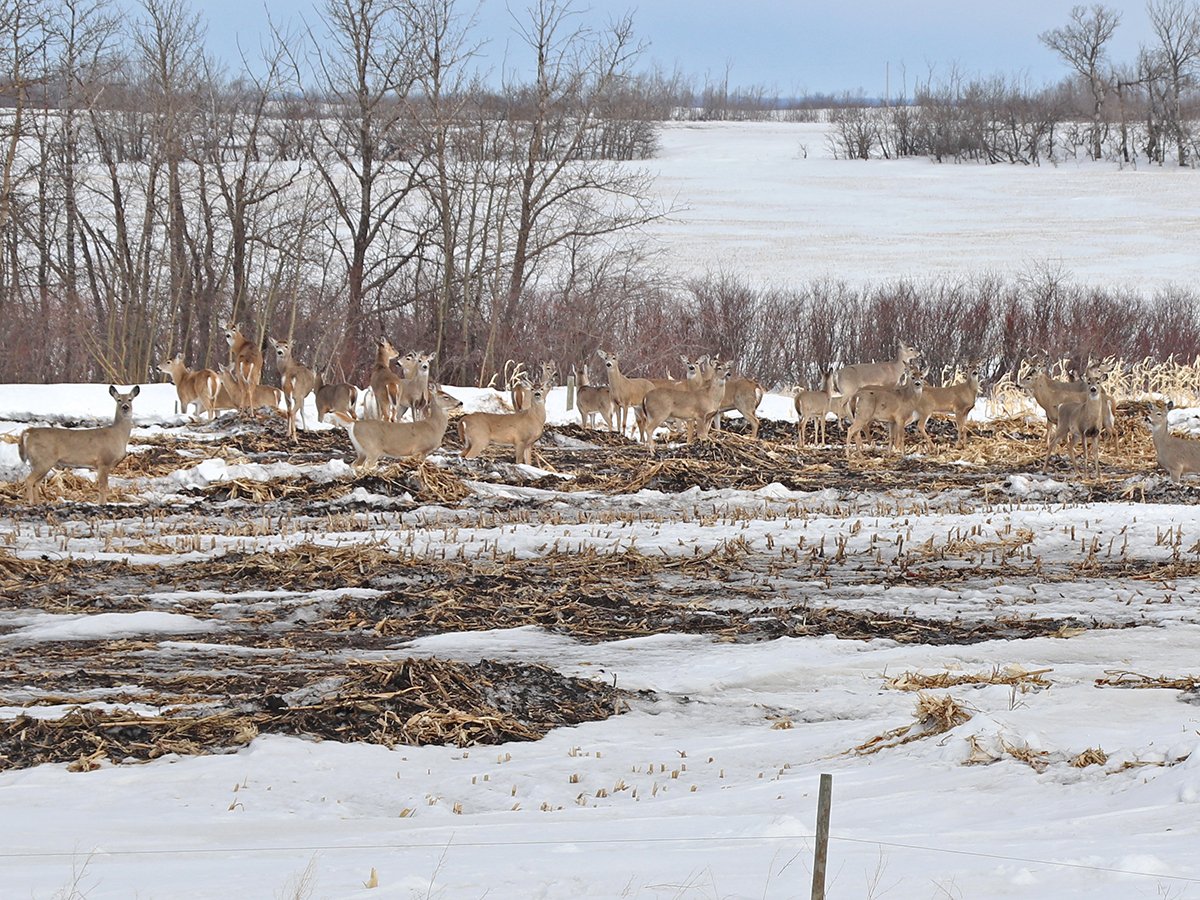Feeding winter-damaged crops to cattle may be risky business.
About a million acres in Alberta were left unharvested over the winter due to a wet fall. There is a risk of wildlife damage, moulds and fungi that make the crops unpalatable or fail to provide enough nutrition, said forage specialist Barry Yaremcio of Alberta Agriculture.
“Even if you do put this up as greenfeed or thresh it, there is a possibility the animals will just refuse to eat it if it is contaminated severely enough,” he said.
Read Also

Foot-and-mouth disease planning must account for wildlife
Our country’s classification as FMD-free by the World Organization for Animal Health has significant and important implications for accessing foreign markets.
Forage specialists from Alberta and Saskatchewan have prepared a list of recommendations and warnings. Their investigation of sodden fields shows some swaths have stood up well, but in other cases heavy windrows have fallen to the ground, causing considerable mould and mildew.
Secondly, because of the freeze-and-thaw cycle during winter, nutrients have leeched away. There is also a risk of ergot, fusarium, moulds, dirt and fecal contamination from wildlife.
Typically, swath grazing or greenfeed offered during winter can provide enough nutrition to cows in early- to mid-pregnancy. After calving, requirements go up 25 to 30 percent.
However, weather-degraded plants must be blended with better quality feed and should make up only 20 to 25 percent of the total ration.
Mineral imbalances of calcium, phosphorous, magnesium and potassium might occur.
“There is no way you are going to be able to use this as a sole ingredient,” Yaremcio said.
Producers want to remove the winter-damaged crops from fields in preparation for spring seeding. It’s possible to turn them into silage, greenfeed or bales but there are risks.
He said silage is not an option because fermentation is not likely to occur without adequate sugars, and most of these crops will lack soluble sugars.
Moisture levels for proper ensiling are also questionable.
Proper fermentation requires a moisture content of 60 to 65 percent for chopped silage and 45 to 50 percent for bale silage. Lower moisture levels make it difficult to pack the material resulting in higher oxygen, longer fermentation and lower quality.
Abandoned canola fields cannot be turned into greenfeed because of the high oil content.
“Do not even think about using canola as a greenfeed at this stage in maturity,” he said.
Baling these crops as greenfeed means checking moisture content. Bales with 16 to 18 percent moisture have the potential to heat and lose quality.
When feeding cattle mature cereal crop greenfeed, problems like grain overload, acidosis and bloat are possible. The ratio of grain to straw is almost equal and cattle will eat the grain rather than the straw.
Try rolling out bales so animals can sort through and avoid eating mouldy feed. Forcing cows to eat five percent mouldy feed reduces ration digestibility by 10 percent.
Rolling out the greenfeed also reduces the amount of dust and spores the animal breathes in, reducing the risk for eye and respiratory problems.
Besides reduced feed value, mycotoxins are common in cereal grains but less so in canola and legumes. It is recommended potential feeds are tested for contaminants.
Ergot is widespread this year. Moulds develop in the seed heads during summer and mycotoxins form in the developing crop. Fusarium of all types may also be present.
These contaminants caught hold last year and once the temperature drops below 5C, they remain in the crops. The concentration in spring is similar to what was present in fall, so it is important to test for the presence of mycotoxins, not the type of microbes or populations present on the material.
For additional information, contact a nutritionist, government livestock extension specialist, veterinarian or feed consultant that can provide assistance.















